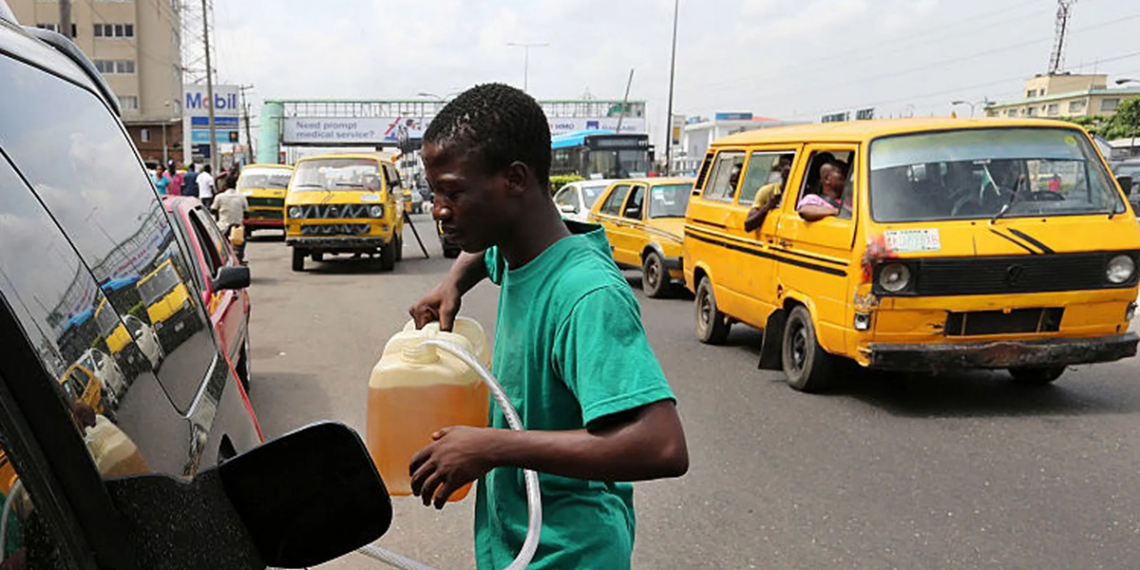The removal of fuel subsidies has been a recurring policy issue for many countries, including Nigeria and India. While both nations face similar challenges in the petroleum sector, their approaches to fuel subsidy reforms differ significantly.
In an newsletter published by Outlook Planet and updated in November 2024, India has since 2010 had a “fossil fuel subsidy policy” which has undergone several reforms since then.
However, in Nigeria, subsidy was removed through the president’s inaugural speech where he announced that “Subsidy is Gone!”.
This announcement since May 2023 has led to a surge in the price of petrol nationwide, increase in the cost of goods and services as well as other ripple effect on the economy being a resource dependent economy, without clear policy frameworks to mitigate the impact.
In contrast, India’s gradual and research-driven approach to subsidy removal offers lessons in strategic planning and implementation that can be beneficial to consider.
The Background of Fuel Subsidies in Nigeria
A simplified definition of fuel subsidy is the portion of the total fuel price paid for by the government on behalf of its citizens.
According to Zinami (2024), Fuel subsidies in Nigeria date back to the 1970s when they were introduced to reduce the burden of fuel costs on citizens.
They became institutionalized in 1977 under the Price Control Act promulgated by the military regime of Olusegun Obasanjo, which regulated prices of essential items, including fuel. Over the decades, subsidies grew to cover a significant portion of government expenditures.
By 2013, Nigeria was listed among the top 20 countries subsidizing fuel consumption, according to the International Energy Agency (IEA) as cited in Soile & MU, 2015.
Despite being one of Africa’s leading oil producers, Nigeria’s inability to maintain functional refineries forced it to rely heavily on imported refined petroleum products.
This paradox has made subsidies unsustainable, leading to mounting fiscal pressures and limited development benefits.
In May 2023, President Bola Tinubu inaugural speech led to the abrupt removal of fuel subsidy triggered an immediate spike in petrol prices and a ripple effect on goods and services, reflecting Nigeria’s heavy reliance on petroleum for economic activity.
A public announcement during an inaugural speech alone does not constitute a comprehensive fuel subsidy reform. India has faced challenges in the petroleum sector similar to those in Nigeria.
According to the U.S. Energy Information Administration (“EIA”) 2022, India was the world’s third-largest energy consumer, following China and the United States, as of 2021.
The increasing demand for petroleum products, driven by economic growth, has been compounded by limited domestic production capacity, necessitating fuel imports. Like Nigeria, India has historically seen substantial government involvement in its petroleum sector.
In Nigeria, the most notable reform following the removal of the fuel subsidy is the reallocation of funds previously used for subsidies to sectors such as public infrastructure, education, healthcare, and job creation—areas intended to improve the lives of millions.
It will interesting to note that prior to President Tinubu’s inauguration, the Nigerian government spent approximately ₦400 billion (around $500 million) per month on subsidizing petroleum imports, as noted by Mele Kyari, the CEO of the Nigerian National Petroleum Company Limited (NNPCL), which is authorized to operate in Nigeria’s oil sector.
While redirecting these funds could theoretically represent a significant reform, its effectiveness remains uncertain if the impacts are not clear, neither do they directly improve the standard of living or the cost of living of Nigerians who have to bear the brunt of subsidy removal.
For example, the 2024 budget allocated ₦1.54 trillion to the education sector, representing only 6.39% of the total budget.
There was no notable increase in the education budget when compared with previous years that shows the rechannelling of fuel subsidy funds.
This limited visible improvement suggests a lack of proper planning and insufficient research into the specific needs of the Nigerians.
However, unlike Nigeria, India’s fuel subsidy reforms were guided by a thorough assessment of cost-benefit analyses and economic impacts, resulting in more effective outcomes for its economy. In India, fuel subsidy reforms were shaped by the work of government-appointed committees conducting extensive research and analysis.
Through these reform initiatives, India significantly reduced its fuel subsidy burden from $24.6 billion in 2013 to just $1.16 billion in 2017—a remarkable 95.28% decrease.
This was achieved by deregulating the prices of LPG, DPK, and AGO, illustrating the importance of systematic and research-driven reform strategies.
India’s Fuel Subsidy Reforms: A Gradual and Comprehensive Approach
India has pursued fuel subsidy reforms through a gradual, well-planned, and research-driven process since 2010.
Ranking as the third-largest energy consumer in the world after China and the United States, India faced challenges like Nigeria, such as growing demand for petroleum products, heavy government involvement in the energy sector, and limited domestic production capacity necessitating fuel imports.
To address these challenges, India formed multiple expert committees to guide subsidy reform policies:
- Rangarajan Committee Report (2006) – Recommended the use of global market prices to determine the market price for petrol and diesel in the country while limiting subsidized kerosene to families below-poverty-line (“BPL”) and increasing retail prices for LPG.
- Parikh Committee Report (2010): Advocated for complete liberalization of petrol and diesel prices at both the refinery and retail levels, targeting subsidized public distribution system (“PDS”) kerosene for households below-poverty-line with annual price increases tied to agricultural Gross Domestic Product (“GDP”) growth, kerosene sold outside the subsidized public distribution system was set close to the price of diesel, annual quantity limit of six 14.2 kg cylinders on subsidized LPG for each household, and using direct cash transfers or quantity rationing for subsidized LPG.
- Nilekani Task Force Interim Report (2011) – Recommended replacing in-kind fuel and fertilizer subsidies with direct cash transfers using the Unique identification (“UID”) system to reduce fiscal costs by eliminating duplication and ghost beneficiaries.
- Kelkar Committee Report (2012) – Outlined a fiscal consolidation plan involving phased elimination of diesel subsidies over two years, full deregulation by 2014, gradual removal of LPG subsidies over three years, and a one-third reduction in politically sensitive kerosene subsidies within the same timeframe.
These reforms significantly reduced India’s fuel subsidy burden from $24.6 billion in 2013 to just $1.16 billion by 2017—a decrease of over 95%.
This achievement was facilitated by deregulating LPG, kerosene, and automotive gas oil prices, adopting direct cash transfers, and targeting subsidies only to vulnerable populations.
Key Lessons for Nigeria from India’s Reforms
India’s approach underscores several key elements that Nigeria could adopt to make subsidy reforms more effective:
- Research-Based Policy Formulation: India’s reforms were guided by thorough research and committee recommendations. By contrast, Nigeria’s abrupt announcement lacked a well-defined policy framework, creating economic shockwaves without providing adequate support mechanisms for affected populations.
- Targeted Support Measures: India implemented targeted subsidies for vulnerable populations and used direct cash transfers to eliminate waste and duplication. In Nigeria, the promise to redirect subsidy savings toward social sectors like education and healthcare has not translated into visible improvements, hence, there is need for better-targeted and transparent support mechanisms.
- Gradual Phasing-Out: The gradual removal of subsidies in India allowed time for the economy to adjust. Nigeria’s sudden subsidy removal led to a surge in fuel prices and widespread economic distress. A phased approach, with well-planned timelines and support measures, could have mitigated the shock.
- Public Consultation and Transparency: India’s reforms involved extensive consultations with stakeholders, enhancing public understanding and acceptance. Nigeria’s unilateral decision-making process limited public buy-in, leading to widespread dissatisfaction.
The Way Forward for Nigeria
For Nigeria, merely redirecting funds from subsidies to infrastructure, education, and healthcare is insufficient if the impact is not measurable or transformative.
Effective reform requires clear policies, transparency, and targeted initiatives to ensure that savings translate into tangible benefits. Learning from India, Nigeria should focus on:
- Enhanced transparency and accountability to track and measure the impact of redirected funds.
- Support mechanisms such as direct cash transfers or targeted subsidies to shield vulnerable populations.
- Comprehensive planning and phased implementation to minimize economic shocks.
- Stakeholder consultations to build public support and ensure policy acceptance.
Conclusion
India’s experience with fuel subsidy reforms demonstrates that effective policy changes require a structured approach involving research, planning, public consultation, and targeted social programs.
While Nigeria’s recent subsidy removal represents a necessary step toward fiscal stability, the lack of a comprehensive policy framework undermines its potential benefits.
In contrast, India’s reforms led to measurable improvements that directly impacted the country’s economy. Through extensive consultation, policy formulation, and research, the Indian government increased access to clean cooking solutions for the rural poor through subsidized LPG.
Additionally, direct cash transfers to low-income households helped mitigate the negative effects of subsidy removal, while deregulation allowed oil companies to operate more freely, boosting revenue generation.
This contrast between India’s carefully planned, research-driven reforms and Nigeria’s fewer tangible outcomes highlights the importance of adopting a more structured approach in Nigeria.
By doing so, Nigeria can achieve meaningful reforms that balance fiscal responsibility with social equity, ultimately leading to sustainable development and improved well-being for its citizens.
[Featured Image Credit]
Meet the Writer – Peace Otonihu

Peace Otonihu is a seasoned investment banking analyst at a top-tier investment bank in Africa. Her expertise lies in policy analysis, financial advisory, project and development finance, focusing on critical sectors such as oil and gas, energy, mining, transportation, and infrastructure. She is a political scientist, policy analyst, and researcher having co-authoured a research publication in a reputable journal while also exploring medium.
She is a certified chartered accountant from the Institute of Chartered Accountants of Nigeria (ICAN), with keen interest in public policy analysis, public-private partnerships, financial advisory and developing infrastructure projects. She was also a Pioneer student of the School of Politics, Policy and Governance, an unconventional school of politics designed to produce a new generation of political leaders.







Well done, Peace!